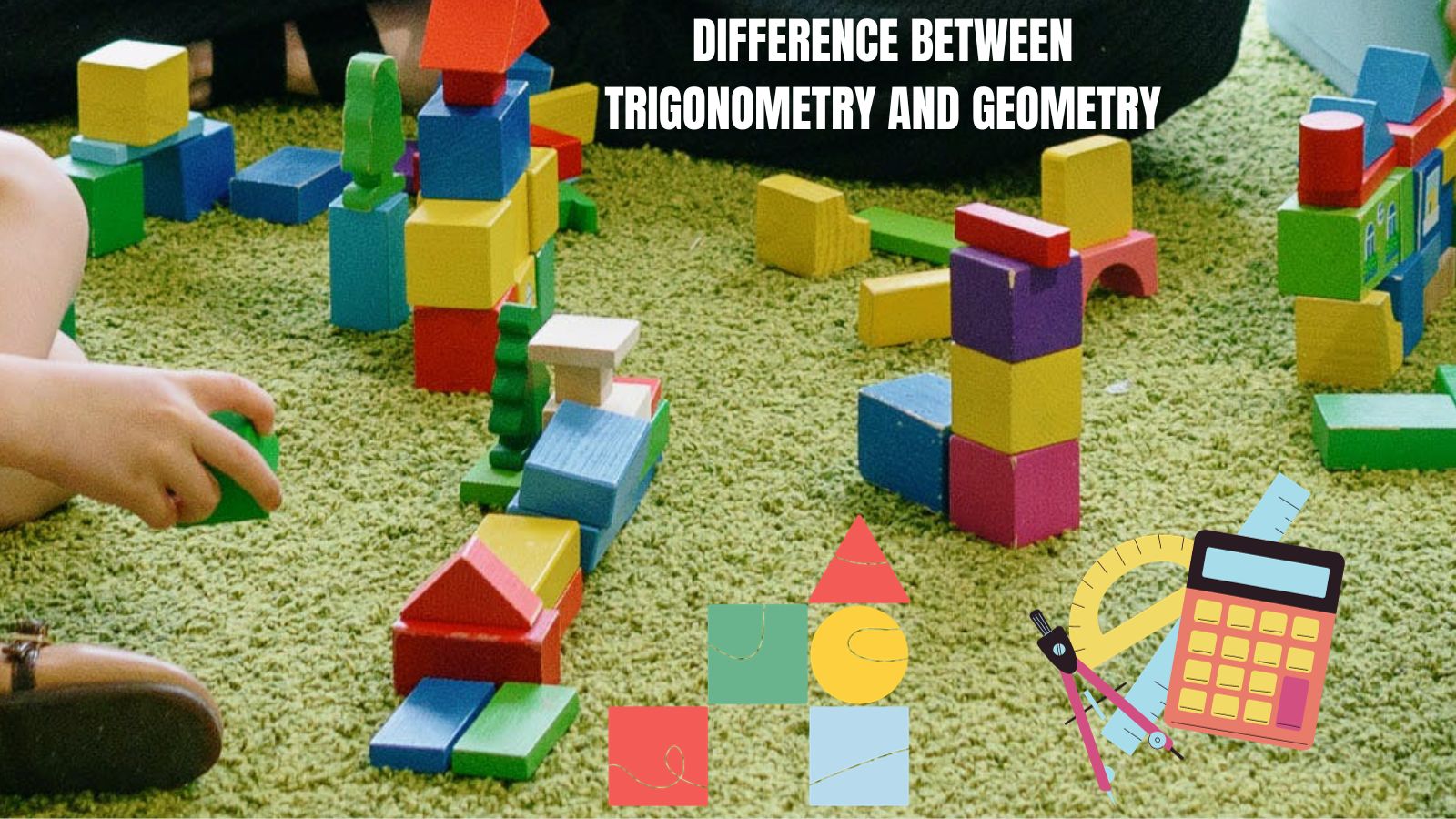Difference Between Trigonometry and Geometry
by Yogi P - December 5, 2023
Trigonometry vs. Geometry
Mathematics, a vast and intricate field, encompasses various branches that explore numbers, shapes, and their relationships. Two such branches, often intertwined in mathematical studies, are trigonometry and geometry.
While both deal with the study of shapes and angles, they have distinct focuses, methodologies, and applications.
This article aims to explains the differences between trigonometry and geometry, providing a clearer understanding of their unique characteristics and interplay.
What is Geometry?
Geometry is one of the oldest branches of mathematics, primarily concerned with the properties and relations of points, lines, surfaces, and solids. It is about the study of shapes, sizes, relative positions, and dimensions of objects.
Geometry is divided into two main branches: Euclidean geometry, which deals with flat spaces, and Non-Euclidean geometry, which deals with curved spaces.
Key Aspects of Geometry:
- Scope: Covers a broad range of shapes – from simple lines and circles to complex three-dimensional objects.
- Principles: Based on axioms and theorems that describe the properties of geometric objects.
- Types: Includes plane geometry (dealing with shapes on a flat plane) and solid geometry (concerning 3D objects).
- Applications: Used in various fields, including art, architecture, engineering, and physics.
What is Trigonometry?
Trigonometry is a branch of mathematics that specifically deals with the relationships between the sides and angles of triangles. The word trigonometry comes from the Greek words ‘trigonon’ (triangle) and ‘metron’ (measure).
Its primary function is to study triangles and to perform calculations based on their measurements.
Key Characteristics of Trigonometry:
- Focus: Concentrates on the properties of triangles, particularly right-angled triangles.
- Functions: Involves trigonometric functions like sine, cosine, and tangent, which relate the angles of a triangle to its side lengths.
- Calculations: Used to calculate unknown angles or sides of a triangle when certain other aspects are known.
- Applications: Extensively used in fields like physics, engineering, astronomy, and navigation.
Table Summarizing the Differences Between Trigonometry and Geometry:
| Aspect | Geometry | Trigonometry |
|---|---|---|
| Fundamental Focus | The study of shapes, sizes, and the properties of space. | The study of relationships between sides and angles in triangles. |
| Scope | Broad, covering various types of shapes and structures. | Focused specifically on the properties of triangles. |
| Core Elements | Points, lines, angles, surfaces, and shapes. | Sine, cosine, tangent, and other trigonometric functions. |
| Applications | Architecture, art, engineering, computer graphics. | Physics, engineering, astronomy, surveying, navigation. |
Understanding Through Practical Examples
- Geometry Example: Calculating the area of a circle, designing the layout of a house, or determining the angles within various shapes are applications of geometry.
- Trigonometry Example: Determining the height of a mountain based on the distance and angle of elevation, or solving problems in physics that involve forces and motion using angles.
The Interplay Between Trigonometry and Geometry
While distinct, trigonometry and geometry often intersect. For example, trigonometric functions are used to solve geometric problems involving right-angled triangles and circles, illustrating the complementary nature of these two branches.
Educational Path and Complexity
- Geometry is typically introduced earlier in educational curricula, focusing on more visual and tangible aspects of mathematics.
- Trigonometry usually comes later, building on geometric principles to delve deeper into mathematical relationships involving angles and measurements.
Conclusion
In summary, geometry and trigonometry are two pivotal branches of mathematics that, while related, have different scopes and applications. Geometry is the broader study of shapes and space, encompassing a wide range of objects and their properties.
Trigonometry, on the other hand, is focused on the specific relationships within triangles, especially right-angled ones. Both are essential for a comprehensive understanding of mathematics and its applications in various real-world scenarios, from engineering and physics to art and navigation.
Understanding their differences and how they complement each other is key to mastering mathematical concepts and their practical applications.









